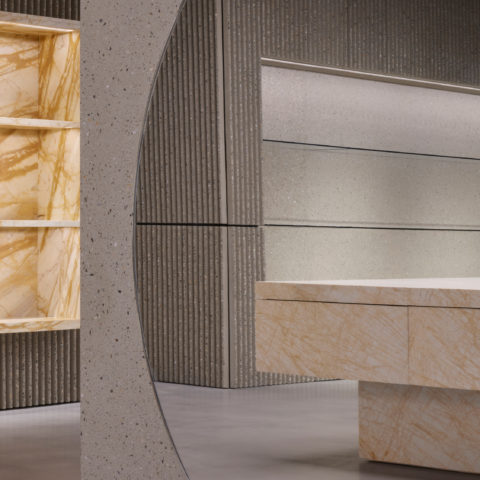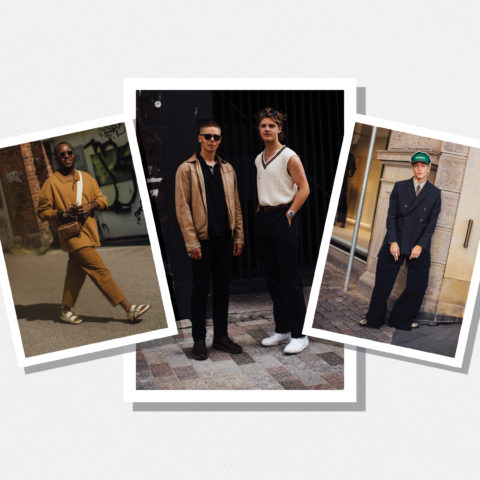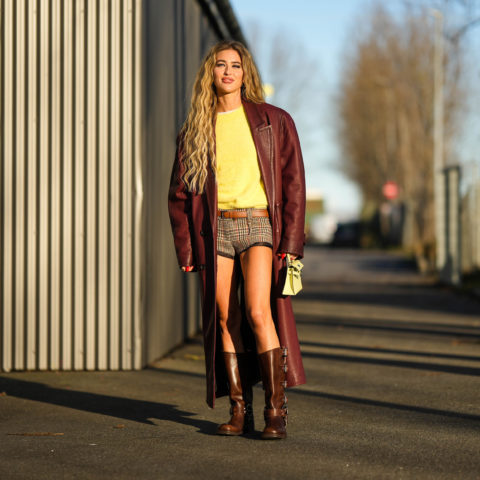We Spoke With Iris van Herpen About Envisioning the Future of Femininity
Iris van Herpen’s fantastical designs live just beyond the border of imagination. The 34-year-old Dutch designer draws inspiration from subjects as esoteric and varied as biopiracy and synesthesia and gravitates toward technology on the vanguard of scientific innovation to inform her creations. And yet because her work is so forward-thinking, it is often misunderstood. We spoke with van Herpen while she was visiting Toronto for the opening of her career-retrospective exhibition, Iris van Herpen: Transforming Fashion, at the Royal Ontario Museum. Here, van Herpen clears up some of the misconceptions surrounding her work and draws us deeper into her world, where scientific discovery mingles with magic.

What kind of story have you been telling over the course of your career?
I guess it is many small stories. I’m looking for new ways of seeing femininity and a continuous dialogue between craftsmanship and technology. It’s really the story of where fashion can go, how things can change and how we can grow and move forward. I think it is also about going toward a more abstract idea of movement, toward a new materiality.
What is this new view of femininity you are trying to imagine?
As a designer, I look at both the future and the history of fashion, and women have gone through many stages. But in fashion, things are often repeated, and the way we look at women is one of them. I think it is a subject that has much more freedom than what we project on it. For me, it’s really important to break those laws and go beyond that.
One of the most common words people use to describe your work is “otherworldly.” Do you identify with that characterization?
Not really. I am looking for a different view of femininity and what it means to be a woman. What it means to dress in something beautiful, when something is made for you. I think that is a very special form of art and it’s why fashion is so powerful. When people see something they haven’t seen before, they connect it to the future. I think that’s why my work is often seen as visionary or futuristic. But everything I make is possible today. I reference my work much more to a here and now than to a future.
People often discuss your work in terms of its relation to technology. Can you elaborate on why craft is such an important element in your designs?
Craft is really the base of everything I do. It has always been the base of fashion. There is beauty to be found in the way hands can shape something, because you really see the person who made the garment in the actual piece itself. We have such powerful tools. Hands are really incredible in what they can do. Strangely enough, craftsmanship is really limited in people’s minds in terms of what it is. When you look at my designs, a lot of the pieces that look very futuristic or completely machine-made are actually made by hand. It just shows how much more we can do with craftsmanship than what we already know. I really see a future in craftsmanship combined with the knowledge we have from technology. The two can really help each other. It’s not that we need to evolve one of them; they are really powerful together, I think.
What drives you to keep experimenting in your work?
I think of all the things that will be possible in our near future that are not possible today; they are just waiting to be discovered. It’s a very magical moment when you put so much time and energy into something and you see it evolve and discover something you couldn’t have even imagined. It’s almost like meditation. It’s a feeling I’m looking for over and over.
What technology that doesn’t exist yet would you like to see discovered?
Materials that make certain [body] parts invisible or break the light so you can see a different perspective on the body part that is behind it. There are things possible like it, but not really. The way I have it in my mind, it still needs to evolve.
What appeals to you about pushing the boundaries of technology?
It’s like the old alchemists finding a way to transform things to really have control over a material. I think it relates to me as a dancer in my younger years. The transformation of the body is so powerful. I need to transform. I need both chaos and control in the life around me. So, while people are looking at [my work], I want them to have their own experience with it. When I look at my own work, though, it’s like my own diary. I discover myself through making my own work, not the other way around. So, in the end, it’s really an exploration of who I am and what my future will be.








